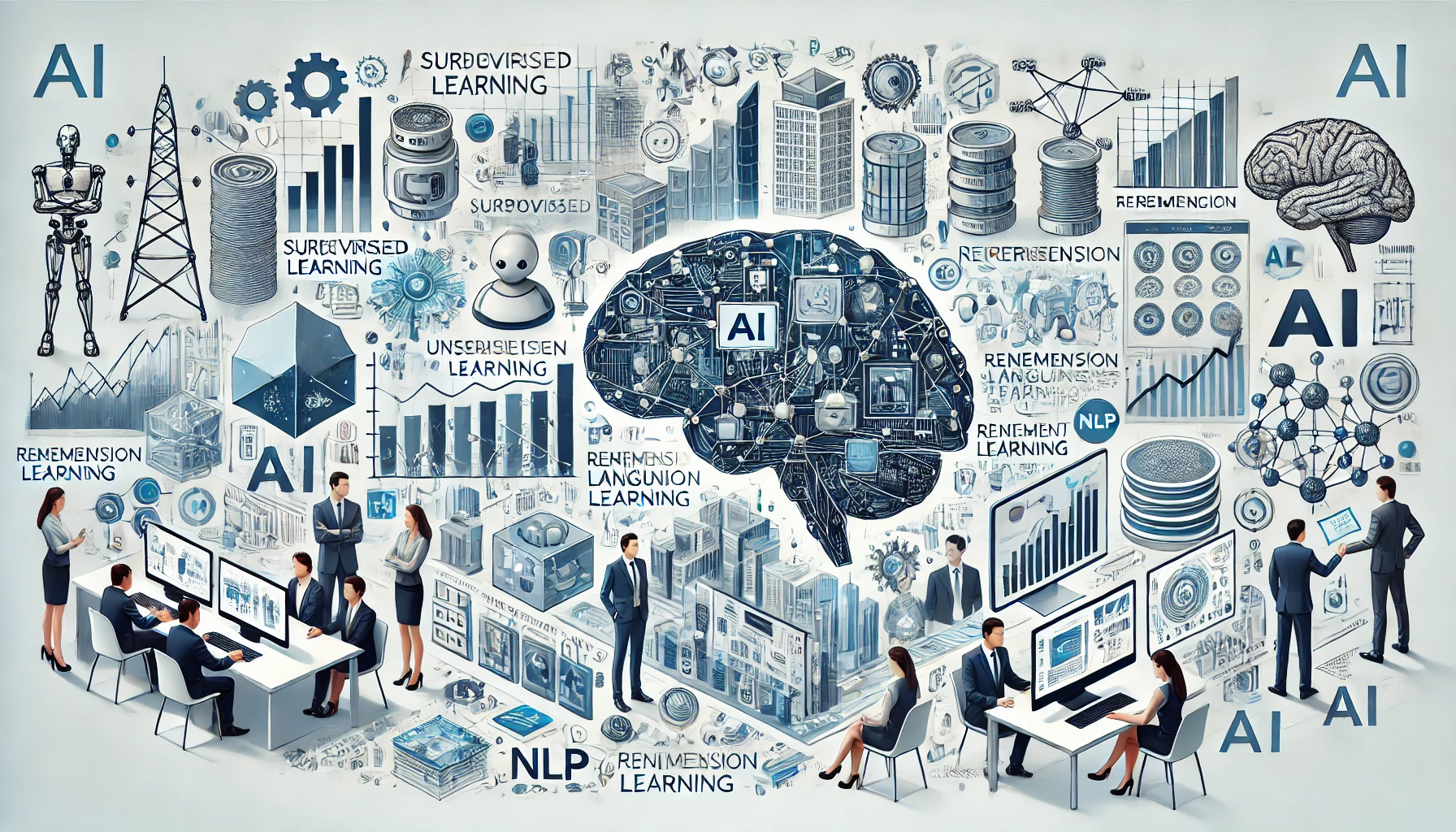Exploring AI Models for Private Organizations: A Comprehensive Guide
Artificial Intelligence (AI) has revolutionized various industries, providing advanced solutions to complex problems. Private organizations can leverage AI models to enhance efficiency, improve decision-making, and gain a competitive edge. This blog post delves into the AI models available for private organization usage, detailing their functionalities, benefits, and implementation strategies.
Introduction to AI Models
AI models are algorithms designed to recognize patterns, make predictions, and learn from data. They range from simple linear regressions to complex deep learning architectures. Private organizations can utilize these models for various applications, including customer service, predictive analytics, fraud detection, and more.
Types of AI Models
Machine Learning Models
Machine Learning (ML) models are the backbone of AI applications. They can be broadly classified into:
- Supervised Learning Models: These models learn from labeled data. Common examples include:
- Linear Regression: Used for predicting numerical values.
- Logistic Regression: Utilized for binary classification problems.
- Decision Trees and Random Forests: Effective for classification and regression tasks.
- Support Vector Machines (SVM): Suitable for classification and regression challenges.
- Unsupervised Learning Models: These models find hidden patterns in unlabeled data. Examples include:
- K-Means Clustering: Groups data points into clusters based on similarity.
- Principal Component Analysis (PCA): Reduces dimensionality of data while retaining most of the variance.
- Reinforcement Learning Models: These models learn by interacting with their environment to maximize cumulative rewards. Examples include:
- Q-Learning: A model-free reinforcement learning algorithm.
- Deep Q-Networks (DQN): Combines Q-learning with deep neural networks.
Deep Learning Models
Deep learning models are a subset of ML that use neural networks with many layers (deep neural networks). They are particularly effective for processing large datasets and complex patterns. Key deep learning models include:
- Convolutional Neural Networks (CNNs): Primarily used for image and video recognition tasks.
- Recurrent Neural Networks (RNNs): Suitable for sequential data analysis, such as time series forecasting and natural language processing.
- Generative Adversarial Networks (GANs): Used for generating realistic synthetic data, enhancing data privacy, and creating high-quality content.
Natural Language Processing (NLP) Models
NLP models enable machines to understand, interpret, and generate human language. Popular NLP models include:
- BERT (Bidirectional Encoder Representations from Transformers): Effective for various NLP tasks like question answering and sentiment analysis.
- GPT (Generative Pre-trained Transformer): Known for generating human-like text and content creation.
Implementing AI Models in Private Organizations
Implementing AI models requires careful planning and execution. Here are the key steps:
Identifying Use Cases
Identify areas where AI can add value. Common use cases include:
- Customer Service: Chatbots and virtual assistants to handle customer inquiries.
- Predictive Maintenance: Predicting equipment failures to reduce downtime.
- Fraud Detection: Identifying fraudulent activities in real-time.
Data Preparation
AI models require high-quality data for training. Steps involved in data preparation include:
- Data Collection: Gather relevant data from various sources.
- Data Cleaning: Remove duplicates, handle missing values, and correct errors.
- Feature Engineering: Transform raw data into features that can be used for modeling.
Model Selection and Training
Choose the appropriate model based on the use case and data characteristics. Train the model using historical data and validate its performance using metrics such as accuracy, precision, recall, and F1 score.
Deployment and Monitoring
Deploy the trained model in a production environment. Monitor its performance continuously and retrain it as necessary to maintain accuracy.
Benefits of AI Models for Private Organizations
Implementing AI models can offer several benefits to private organizations:
- Improved Efficiency: Automating repetitive tasks allows employees to focus on more strategic activities.
- Enhanced Decision-Making: AI models provide data-driven insights, enabling better decision-making.
- Cost Savings: Reducing manual processes and errors leads to significant cost savings.
- Competitive Advantage: Leveraging AI can provide a competitive edge by offering innovative solutions and services.
Challenges and Best Practices
Challenges
- Data Privacy and Security: Ensuring the privacy and security of data used for training AI models.
- Scalability: Managing the scalability of AI solutions as data volumes grow.
- Skill Gap: Addressing the skill gap by training employees in AI and ML technologies.
Best Practices
- Start Small: Begin with small, manageable projects to demonstrate the value of AI.
- Collaborate with Experts: Partner with AI experts and consultants to ensure successful implementation.
- Continuous Learning: Keep abreast of the latest advancements in AI to stay competitive.
Conclusion
AI models offer immense potential for private organizations to transform their operations and achieve business objectives. By understanding the different types of AI models, implementing them effectively, and addressing associated challenges, organizations can unlock new opportunities and drive innovation.
For more detailed information and case studies on AI model implementation, consider exploring resources from leading AI research institutes and technology providers.
For additional resources and case studies, websites like Towards Data Science, KDnuggets, and AI Trends offer a wealth of information on AI applications and best practices.







